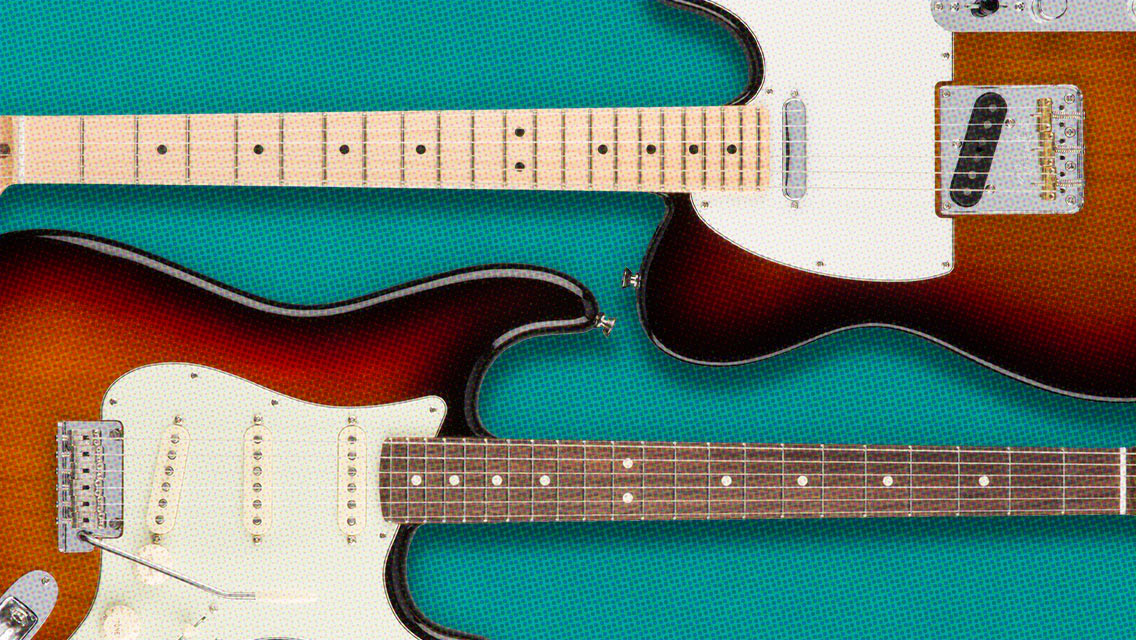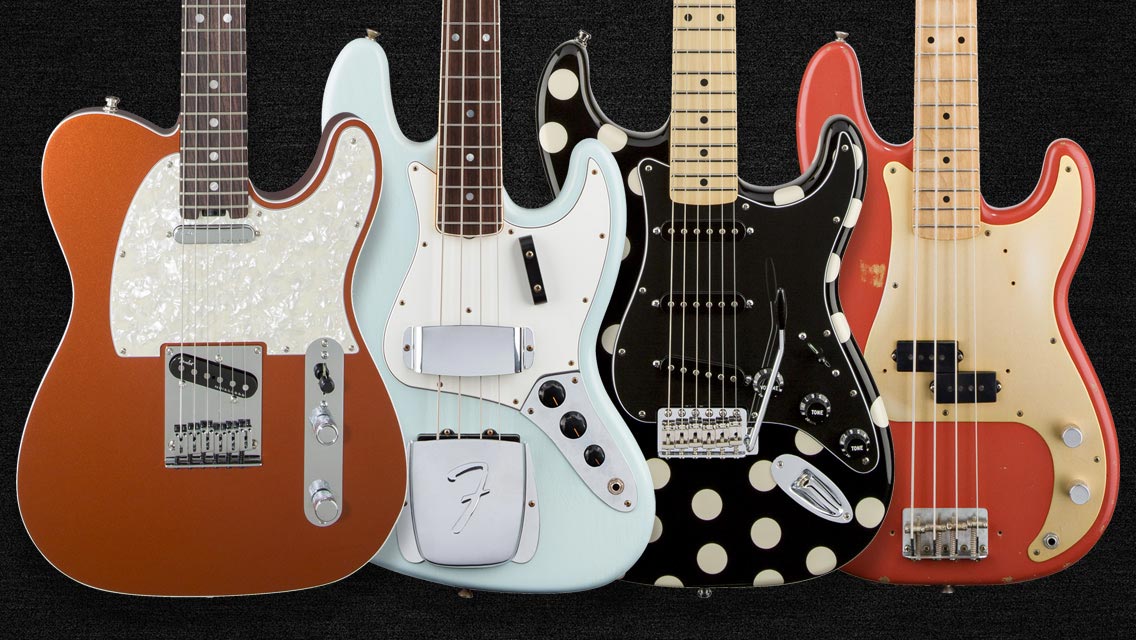
Sections
While learning to play chords give you the building blocks to play songs, chord progressions help you form those building blocks into a more structured song. Learning guitar chord progressions can help you not only better understand what chords work well together, but consistent practice can help you transition faster and more smoothly between chords – staying on beat and on-melody.
In this article, we’ll show you three common chord progressions on guitar and how they are structured. We’ll also give you a few examples of songs where you can hear these progressions – and get some inspiration for your own practice sessions. Let’s get started!
Check out the California Redondo acoustic guitar featured in the image above. Great for beginners looking for a bold sound with a built in pickup/preamp.
What Is A Guitar Chord Progression?
A chord progression is a series of chords played in a specific pattern to give a song its unique harmony. While there are many common chord progressions, it’s how those chords are arranged within a song that bring a piece of music to life.
For beginners, there are several basic chord progressions you should be familiar with. Learning these easy chord progressions can help you to gain more practical knowledge of scales and their corresponding chords. Beyond building up your bank of musical knowledge, practicing chord progressions can help you not just become more proficient at transitioning between chords, but is a great way to focus on improving your ability to play strumming patterns and your overall technique.
When it comes to chord progressions, precision is the name of the game. Start slowly. Begin by placing your fingers on the correct frets in the proper position to form a chord. Don’t feel pressured to strum one chord and immediately follow it up with the next chord in the progression. Rather, take your time and be sure you’re fretting the notes correctly. Strum it a few times to better cement the sound of that chord into your brain. Then, take your time and proceed to the next chord, keeping precision and technique in mind.
3 Easy Guitar Chord Progressions for Beginners
Once you have a pocketful of chords under your belt, those chords can be mixed and matched in a variety of ways. Even if you know just four basic chords, those beginner chords can be used to play some of the most common guitar chord progressions that can be heard in some of your favorite songs.
The chord progressions we’ll show you here make use of the A minor chord (Am), C major chord, F major chord, and G major chord. These chords, along with the D major chord, are arguably the most essential beginner chords, giving new guitarists a firm foundation and the tools needed to play some of the most well-known songs ever.
The Am, C, F, and G chords can be shuffled around in a few tried-and-true ways to create some commonly used guitar chord progressions for beginners to add to their repertoire. While these chord progressions each have their own recognizable name, they also make use of Roman numeral names and patterns to let you know which chords to play in each configuration. The numbers or Roman numeral names for chords in a progression indicate which interval or note that chord represents in a given scale.
For instance, the chord progressions we’ll show you here build off of the C major scale. The first (or root) note of the C major scale is C. This scale does not have any sharps or flats, making it an easy one for beginners to remember.
Pro tip: When you see the Roman numeral names for chord progressions, major chords are written as an uppercase Roman numeral. For instance, the Roman numeral “IV” is shorthand for the fourth note of the C major scale (F), without any sharps or flats.
On the flipside, when you see a Roman numeral written in lowercase, it represents shorthand for a minor chord version of the specified note of the scale. For example, the lowercase Roman numeral “vi” represents the minor of the sixth note of a given scale. Using the C major scale as an example, the sixth note is “A,” and you would make use of the Am chord in a chord progression if you see lowercase Roman numerals as an indicator.
Don’t miss out!
Be the first to know about new products, featured content, exclusive offers and giveaways.
Chord Progression #1: ‘50s Doo-Wop Progression (I - vi - IV - V)
One common chord progression is the ‘50s Doo-Wop progression. This progression gets its name from the the Doo-Wop genre of music that was popular in the 1950s and ‘60s, making use of three- and four-part harmonies. One of the most simple and popular chord progressions on guitar, the Doo Wop progression has a very melodic feel – almost telling a story with a recognizable pattern.
Using the C Major scale as our basis, here’s how you would play the Doo-Wop chord progression:
• I = C Major chord • vi = A Minor chord • IV = F Major chord • V = G Major chord
Try strumming this simple chord progression on guitar using a steady pace of quarter notes. While the version of the Doo-Wop progression we’re showing you here uses chords and a scale that is easy for beginners to play, you can apply the I-vi-IV-V formula to any scale and replicate this progression with different chords.
To hear how this chord progression sounds in the wild, you can listen for it in a variety of songs, Ben E. King’s iconic 1961 ballad “Stand By Me”, as well as Prince’s magnum opus, “Purple Rain.” The Doo-Wop progression is also part of the foundation of The Temptations’ classic, “My Girl.” You can really hear the chords and the vocal harmonies come together beautifully on this Motown hit! Jumping ahead to the 1980s, you can also hear the Doo Wop progression at play on “Every Breath You Take” by The Police, giving this otherwise sentimental-feeling progression an ominous quality.
Chord Progression #2: C-G-Am-F Progression (I - V - vi - IV)
Another of the most popular progressions for guitar is the C-G-Am-F progression. While it doesn’t have as catchy a nickname as the Doo-Wop progression, it’s just as much of a classic – lending a more energetic feel to songs compared to the more wistful Doo-Wop progression. It’s name is pretty straightforward, letting you know the exact order in which you’d play the chords.
Using the C Major scale as our basis, here’s how you’d play the C-G-Am-F progression:
• I = C Major chord • V = G Major chord • vi = A Minor chord • IV = F Major chord
Try your hand at playing the C-G-Am-F guitar chord progression. Start slow, playing each chord in the progression four times, then speed up your playing, transitioning between each chord at a faster pace.
Hearing the C-G-Am-F progression in songs you know can help you more easily recognize it and inspire you. It an be heard across a wide range of genres. Listen for the C-G-Am-F guitar chord progression in the Rolling Stones’ classic, “Beast of Burden,” giving the song a bluesy feel. For evidence of the progression’s versatility, listen for C-G-Am-F in the modern pop-rock ode to friendships gone sour, “Bad Blood” by Taylor Swift. The I-V-vi-IV chord progression also shows it has a punk side, making an appearance on Green Day’s punchy “When I Come Around.”
Chord Progression #3: Am-F-C-G Progression ( vi - IV - I - V)
The third and final configuration of simple chord progressions we’ll show you is the Am-F-C-G progression. This progression differs from the others in that it kicks things off with the lone minor chord in this progression – the A minor, taking up the “iv” slot using the C major scale as our point of reference.
Here’s how this progression is structured, using the formula:
• vi = A Minor chord • IV = F Major chord • I = C Major chord • V = G Major chord
While minor chords are typically associated with more of a somber feel, starting this progression off with the Am chord doesn’t necessarily relegate the vi-IV-I-V progression to “sad songs.” Pairing the Am chord alongside the brighter tones of the F, C, and G major chord make this versatile progression equally as suited to contemplative ballads as well as rabble-rousing rock tunes or angsty anthems. Listen for this chord progression in such diverse tunes as the riff-laden “Peace of Mind” by Boston, Eagle Eye Cherry’s catchy-yet-romantic “Save Tonight,” Justin Bieber’s “Love Me,” and the pure pop-punk fun of “The Rock Show” by Blink 182.
Check Out Fender Play Chord Progression Lessons
Learning chord progressions on guitar is a great way to train your ear, polish your technique, and gain greater finger dexterity. Once you’ve mastered these chord progressions by putting in practice time on your guitar, try applying the formulas to learn new progressions applied to different scales. Part of the joy of learning music is finding established patterns and using them in new ways. Learn more chords, songs, and skills with a free trial from Fender Play.


